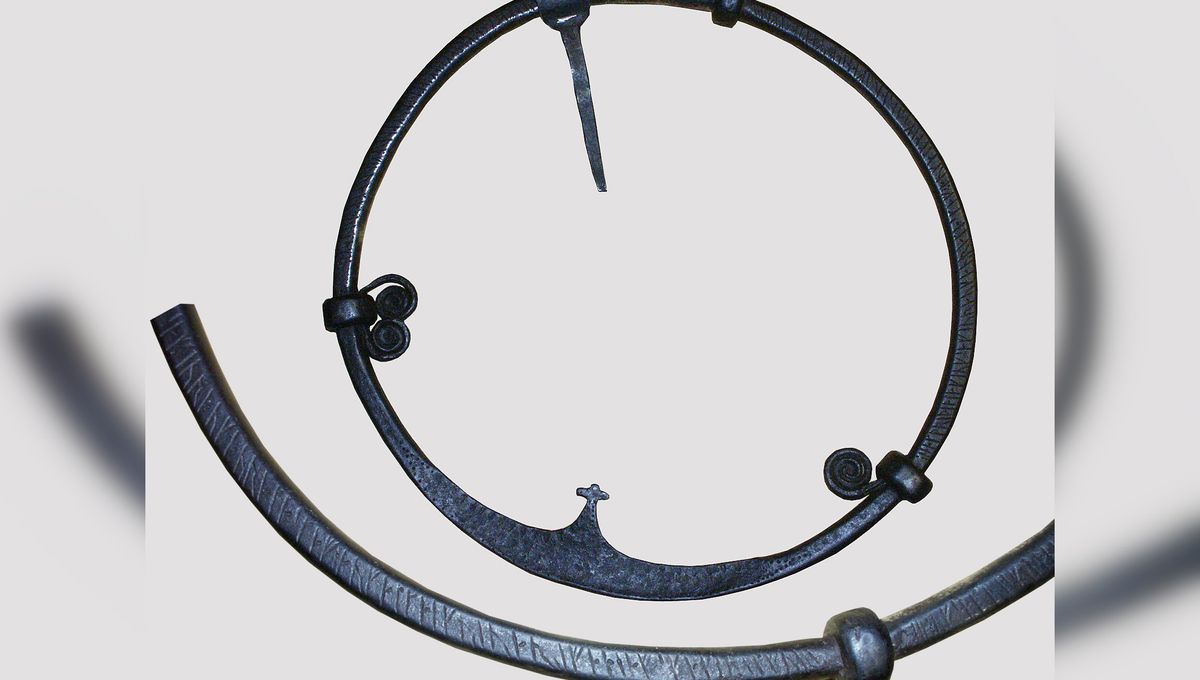
The Forsa Ring (Forsaringen in Swedish) is the oldest surviving legal text from Scandinavia, dating to around the 9th or 10th century CE. However, the information is not inscribed on paper, nor rock or wood, but on an iron ring.
The legal document consists of a metal hoop around 43 centimeters (nearly 17 inches) in diameter that was likely used as a door handle, inscribed with almost 250 runes. The runic inscription on the ring describes fines for a specific offense which must be paid up in oxen and silver – or at least that’s what we previously thought.
In a new study, an economic historian at Stockholm University has taken a closer look at the inscription’s meaning and uncovered new insights into the legal document.
“The Forsaringen inscription ‘uksa … auk aura tua’ was previously interpreted to mean that fines had to be paid with both an ox and two ore of silver. This would imply that the guilty party had to pay with two different types of goods, which would have been both impractical and time-consuming,“ Rodney Edvinsson, study author and Professor of Economic History at Stockholm University, said in a statement.
According to his analysis, the “auk” should be interpreted as “also” as opposed to “and,” meaning the fines could be paid either with an ox or with two ore of silver.
“This indicates a much more flexible system, where both oxen and silver could be used as units of payment. If a person had easier access to oxen than to silver, they could pay their fines with an ox. Conversely, if someone had silver but no oxen, they could pay with two ore of silver,“ Edvinsson explained.
The mention of both “payment types” perhaps reflects the shifting economy of Scandinavia at the time. In the late 10th and early 11th centuries, the region saw an influx of silver that boosted the economy. The newfound wealth led to the minting of the first domestic coins in Sweden around 995 CE. However, just a few decades later in the 1030s CE, coin minting ceased and the economy shifted back to using non-metallic goods, like livestock, as standard trade units.
It’s likely that the Forsa Ring captures this brief transitory period when Vikings were using both rare metals and livestock to exchange value.
As a non-literate culture, the Vikings aren’t known for their record-keeping and are often depicted as wild marauders. However, it is evident they created complexly organized societies and documented the everyday realities of their world in a truly unique style.
They did this using runestones, a system of symbols often carved into rock to commemorate the dead, record significant events, or celebrate achievements. Among the most amazing are the Jelling stones in Denmark, a pair of 10th-century royal gravestones. The oldest was created on behalf of King Gorm the Old to honor his wife Thyra, while the second stone was raised by his son, Harald Bluetooth (the namesake of the wireless technology ).
The new study is published in the journal Scandinavian Economic History Review.
Source Link: Oldest Viking Legal Text, Written In Runes On An Iron Hoop, Reveals New Insights